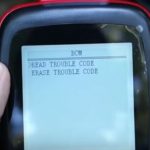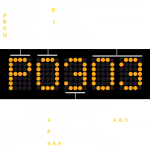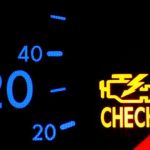The problem with car error codes is that they are difficult to understand, and you may not know which ones to look for. Fortunately, there are ways to decipher these messages and determine what they mean.
Read on to learn more about P0175, P0300, P0102, and P100. If you have any of these codes, don’t hesitate to consult a mechanic! Listed below are some helpful tips to understand each one.
P0175
When your car is giving you the P0175 car error code, it’s a good idea to take a look under the hood. This code usually indicates increased gas consumption, which is a sign that the engine is using too much fuel. Another possible cause is a dirty engine bay, and this could lead to unburned fuel. Using an infrared thermometer or a scan tool to check the engine temperature can also help determine what is causing the code.
The P0175 code is caused by an imbalance between the amount of air and fuel in the engine. The PCM can’t balance the air-fuel ratio, so it releases too much gas. When this happens, there is not enough air in the motor. The check engine light will then turn on. The air/fuel ratio in bank 2 is too rich. The next step in fixing P0175 is to check the ratio in the air-fuel system.
Although the P0175 code itself does not affect your ability to drive, the underlying problems can be quite costly. For one, excessively rich systems force the catalytic converter to work harder and will reduce the life of the converter.
Inefficient air-fuel ratios also increase gas consumption, which can be expensive if you drive with this code. Also, a car running on too rich fuel may have problems with the vacuum system or fuel pump. It is best to have the problem checked by a qualified mechanic as soon as possible.
Another possible cause of the P0175 car error code is a faulty EGR system. This system controls the combustion temperature and nitrogen oxide output. Some drivers may notice reduced fuel economy and rough idling. They may also notice pre-ignition knocking or poor gas mileage. There are several possible causes of this trouble code, but the most common ones are a clogged catalytic converter, electrical problems within the EGR circuit, and a malfunctioning engine computer.
If you’re experiencing P0175 car error codes, you should first check your air filter and the fuel injector. If you find that your car’s air filter is dirty or has too much oil, you may have a leaking PCV valve. A broken or damaged fuel injector can also cause the code. If you notice a high fuel consumption, you may also have a dirty air filter. Finally, your car’s first oxygen sensor may be malfunctioning.
P0300
The symptoms of P0300 car error codes vary according to the severity of the misfire. Misfires are caused by a mixture of unburned fuel and oxygen in the intake manifold. Unburned fuel will leave the exhaust as aerosolized hydrocarbons, contributing to smog and global warming. In addition, partially burned fuel may also produce pollutants like carbon monoxide and nitrous oxide.
A P0300 code may be caused by a wide range of issues, ranging from a worn spark plug to a faulty computer. If you are unsure of the cause of this code, you can perform a test drive and see if it clears the fault code.
The code can also be caused by a malfunctioning fuel injector or oxygen sensor. Regardless of the cause of your car’s P0300 error, it’s important to seek immediate auto repair.
A simple fix can cost under $100. A more complex problem may cost as much as $1,500. In general, driving with code P0300 is not dangerous, but it is still recommended to have your car serviced by a professional. It’s important to remember that many mechanics charge by the hour. If you’re wondering whether or not it’s safe to drive with the code, read on to learn more about the problems associated with it.
A misfire is an indicator that your engine is running poorly. Not only is it annoying, but it could also cause expensive damage. Misfires occur due to a mismatch of fuel, spark, or compression. If they continue, your car’s engine will continue to misfire and cause costly damage to the catalytic converter, the fuel injection system, and the rest of the car. If you experience these symptoms, seek help right away.
If the P0300 car error code appears on your dashboard, it means that your engine is having multiple misfires in a row. You should look for another error code, such as P0301 or P0312.
P0102
The most common cause of P0102 car error codes is a malfunctioning mass air flow sensor (MAF). Incorrectly working MAFs can result in poor gas mileage and a sluggish engine. These issues can be caused by faulty connections from previously required wiring, improperly installed aftermarket components, and high resistance in circuit parts. Another similar trouble code is DTC P0102. To find out whether your car is suffering from this issue, you should consult your mechanic.
A proper diagnosis of a P0102 car error code is not difficult if you have an OBD2 scanner. This tool records freeze frame data, resets codes, and clears trouble codes. You can also perform a physical inspection to determine whether your car is experiencing the error. Visual inspection is important, as well as an examination of the MAF sensor wiring. Checking the MAF sensor film for contamination is a good idea.
Obtaining the freeze frame information is the first step in the diagnostic process. You should also determine if there are duplicate conditions that lead to this error code. For example, while testing your vehicle, take note of the engine load, throttle position, RPM, and road speed. If you can obtain accurate data, you can compare these parameters with Mass Air Flow grams per second PID to verify the P0102 code setting condition.
Another cause of the P0102 car error code is a dirty MAF sensor. This sensor can be dirty or partially plugged with carbon. To rule out a faulty MAF sensor, clean the sensor. Clean the MAF sensor first to eliminate the possibility of a malfunctioning sensor. After cleaning the sensor, the check engine light should remain on. If the check engine light comes on, it’s most likely caused by the problem.
If you’re unable to diagnose the cause of the P0102 car error code, you can visit your mechanic. While you’re there, you can also use an OBD-II scanner to diagnose the problem. The diagnostic procedure used to detect the problem will determine the cause of the code. When you know what the cause of the P0102 code is, you can take necessary actions to repair it right away. You will also be able to determine the best course of action for your car.
P0100
The “P0100” car error code is an indicator of an engine malfunction. This error code can cause a vehicle to use excessive fuel and may also result in the Check Engine light to illuminate when it first starts.
A simple reset of the OBD-II system can resolve this error and allow the vehicle to operate normally again. When faced with this code, most consumers immediately think of a malfunctioning MAF sensor, a leaking vacuum, or misfiring engine. Fortunately, this error code can be caused by any number of other issues.
Several causes of the code can be determined by visual inspection. A bad MAF sensor can cause the P0100 error code to appear on a Volkswagen, BMW, or Mercedes-Benz. If you suspect a bad MAF sensor, it’s important to replace it. You can learn more about MAF sensors in the video below. To troubleshoot this code, it’s important to know what parts are responsible for it.
The problem could be as simple as a corroded connector pin or a corroded mass air flow sensor. If neither of these causes are the problem, you can clean the mass air flow sensor with an air filter or a fuel vapor purge valve cleaner. If the problem persists, you may have to replace the mass air flow sensor altogether. For a more serious issue, you should visit a mechanic.
A P0100 car error code can indicate a number of issues, but in most cases, it indicates a malfunction of one or more of the engine’s systems. The MAP sensor is the most common culprit, indicating a misfire or oxygen sensor error. Understanding the interrelated systems of the car’s engine is necessary for proper diagnosis. In particular, excessive resistance on the ground circuit of the MAP sensor can activate this code.
The P0100 OBD2 fault code indicates a problem with the MAF sensor or the circuit that controls it. The problem may be with the frequency signal or the MAF itself.
A malfunction in the MAF could cause the Check Engine light to illuminate, indicating a leak in the intake air. Alternatively, a cable connected to the MAF could be frayed and short circuiting the engine. Regardless of the underlying issue, this code indicates a problem with the fuel-air mixture.






